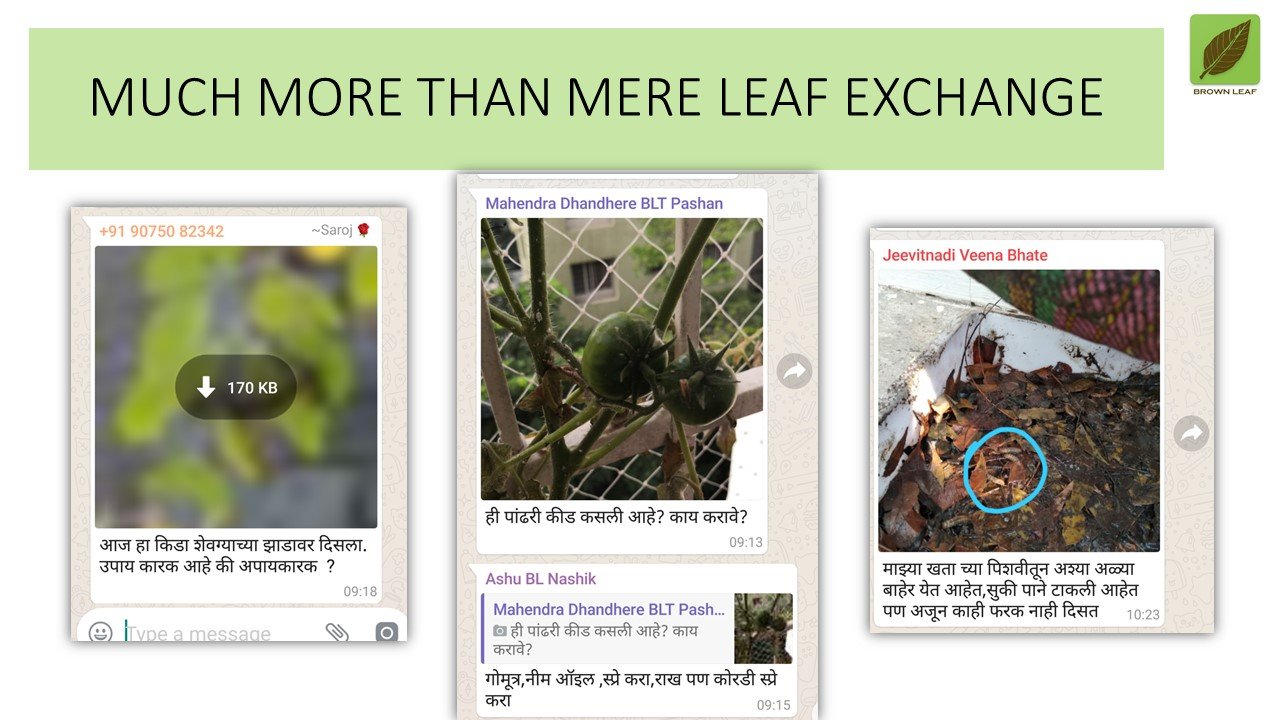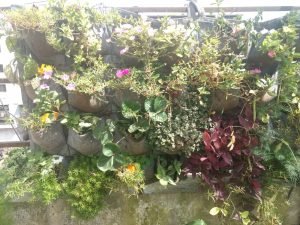The challenge
Come winter, and our streets, footpaths, building premises, rooftops, any horizontal surface in the sight is covered with dry leaves.
From time to time, we sense acrid smoke coming from neighbor’s backyard, from the side of the street, where leaves are being burnt.
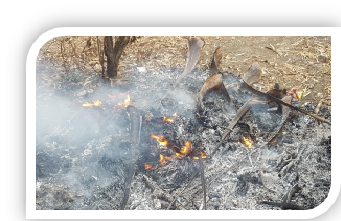
My Experience
I have a huge monkey biscuit tree in my building premises. Till 5 years ago, we used to do the same thing. I felt burning of leaves is wrong because leaves are biodegradable, they would decompose and eventually go back to the soil. I decided to put stop leaf burning in my building. I instructed the lady who sweeps the premises, not to burn the leaves.

I was happy that I have accomplished my goal. About after a month, the lade came to me saying that there is a large heap now and we need to do something about it.
I realized, asking people not to burn leaves is not sufficient, we need to provide an alternative.
What was the alternative? Honestly, I had no idea.
In a desperate attempt to find some solution, I drafted a msg and shared on all whatsapp groups.
A lady, Sujata Naphade replied to my message. She resides in a bungalow society. She owns a plot where she cultivates vegetables, for her, her brother and brother-in-law’s family so that they can consume toxic-chemical pesticide-free vegetables.
This plot was used as a dump spot for many years. With all the construction debris, there was virtually no soil left. Sujata was creating much-needed organic matter using dry leaves.
She promised she can take away every single leaf my tree sheds. In fact, her requirement was even more.
As a starter, I collected dry leaves in 5 gunny bags. Next day, Sujata came and collected those bags.
I was curious. Dry leaves were a huge headache for me. And here, this lady came all the way to take away those leaves.
I visited Sujata’s garden. That visit and subsequent discussions with her were an eye-opener. Till now, my only consideration was dry leaves are biodegradable and hence they should not be burnt. But now I came to know how useful they are.
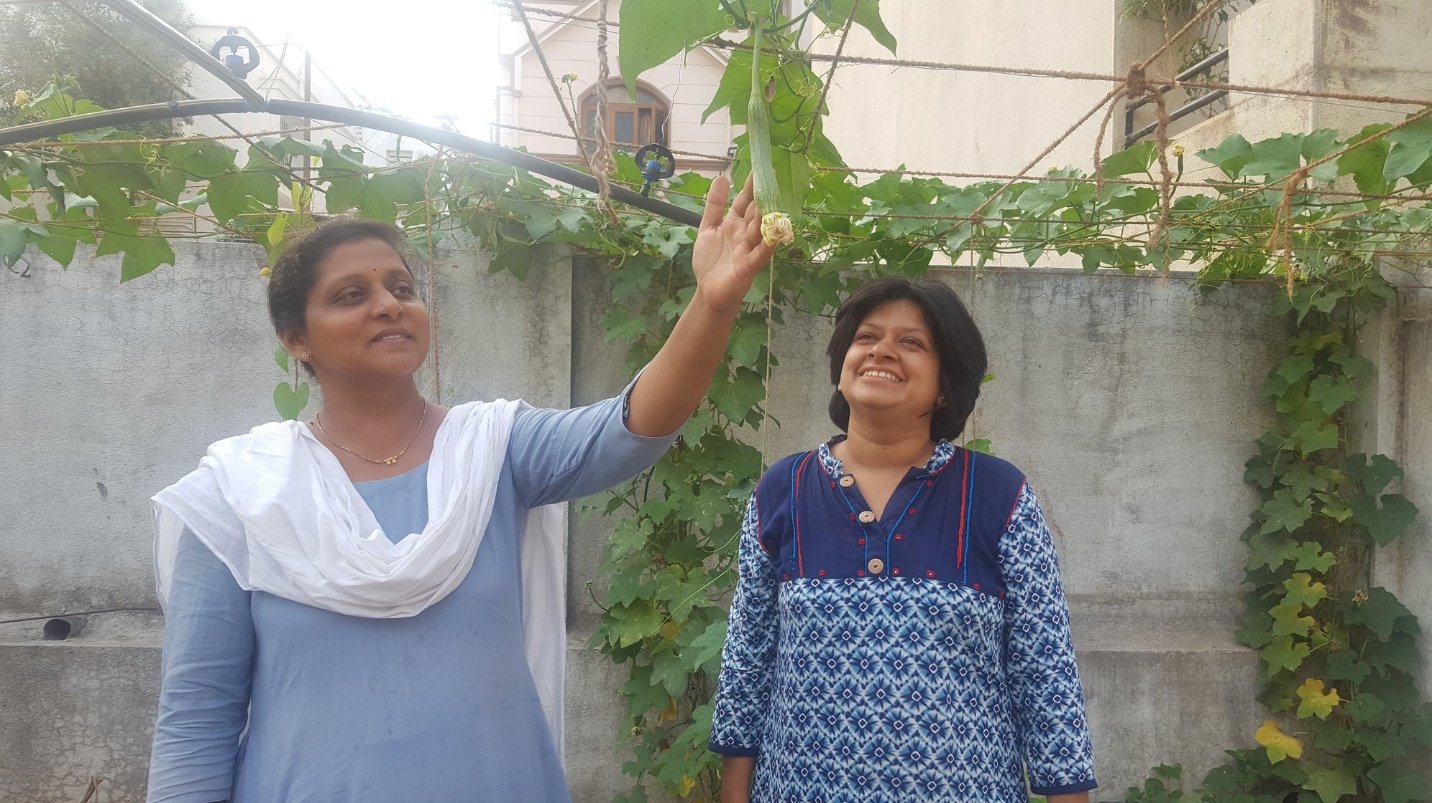
Eureka moment
With this realization, I talked to many people like Sujata. There is a growing trend towards gardening and terrace gardening in the cities. Pune and Bangalore are pioneers in this. Other cities seem to follow the suite.
As you know, in the cities, space is the biggest constraint. Very few lucky ones have a garden around their house. Majority of others utilize their balcony and terrace to cultivate garden.
The challenge for balcony and terrace garden, is where to get the soil from?
Buying soil is not financially feasible. And it is not ecologically advisable as well. When we transport soil from one place to another, we deprive that area of the soil.
So, what do these gardeners do?
They utilize compost made of dry leaves and kitchen waste. Sometimes along with soil, if it is available and sometimes completely without soil.
These gardeners are in constant need of dry leaves.
So, there are people who have dry leaves and there are people who want dry leaves. It is a classic demand-supply situation.
That was an eureka moment for me. I realized, if we can connect these 2 types of people, we can prevent lot of dry leaves from burning.
With this idea in mind, I immediately created a very basic, free website and a facebook page. I drafted one message and circulated it on whatsapp groups.
The response I got was phenomenal. People liked this concept. I got messages from leaf-donors and leaf-takers both. It was a validation that my idea had takers.
In the sections below, I will detail out the challenge and the solution we implemented in Pune city, in the state of Maharashtra, along with some basic information about leaf-fall.
Why trees shed leaves?
Water absorbed by the roots of the plant is distributed to all parts of the plant and gets evaporated through leaves. It is called transpiration.
Leaves have pores on them called stomata. Stomata open and water is let out.
Opening of stomata allows Carbon Dioxide to enter through the leaves. Carbon Dioxide is essential for trees for photosynthesis. In simple words, plants prepare their food through this process. Also, letting out water helps trees to cool off.
After winter, there is summer, the dry season. This is the time when it is necessary to save water. For us and for plants as well 😊
What could be the solution? To get rid of the leaves!! Deciduous trees shed all the leaves. For some duration, there is not a single leaf present on these trees.
Shedding leaves not only helps trees, but also helps the soil. Leaves that fall off from the tree, cover the soil around the tree. Leaves form a layer over soil. Because of this leaf cover, sun light cannot reach the soil. Even soil can retain moisture.
What happens in nature
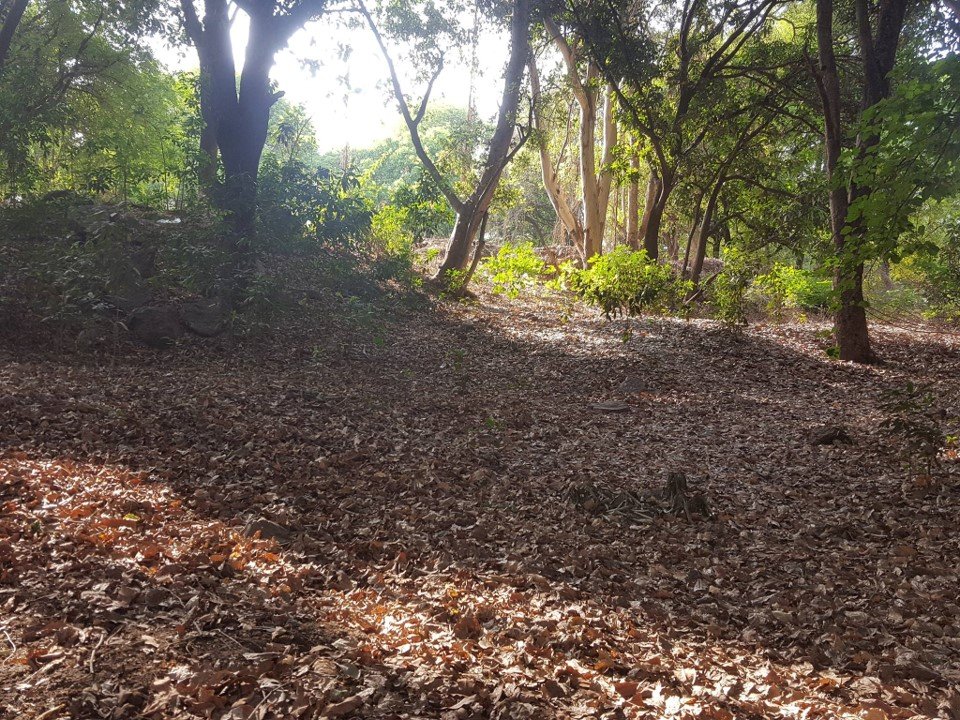
In forests, or any natural landscape, when rains come, leaves decompose and nutrients from them are returned to the soil.
That is the circular system of nature. Output of one system goes as input to some other system.
Hence there is no waste. Dry leaves is never a problem in natural landscape.
Why is it a problem for us?
In our cities and towns there is no space (literally :-)) for this natural process to take place.
Most of the surfaces are covered with roads, building, tiles, paver blocks, right?
And even if space is available, we are not comfortable with
large heap of dry leaves, isn’t it?
So, for us, dry leaves is problem, the waste. Something we should get rid of.
Why we should not burn dry leaves?
First, when leaves are burnt, there is fire. It is open fire. Means smoke is inhaled by people around. Smoke is carried by winds and reaches even people quite far from the place.
Burning of dry leaves generates a large quantity of particulates. These particulates are carried by the wind. They can reach deep in lung tissue of people around and can cause
- Coughing
- Wheezing
- Chest pain
- Shortness of breath
- Long-term respiratory problems
For the people who suffer from asthma or other breathing disorder, leaf burning is extremely hazardous.
Life on earth is carbon-based. We all, i.e. all the living things are made up of carbon.
So, when any organic matter is burnt, that carbon combined with oxygen is let out in form of carbon dioxide.
If the leaves in the heap smother, i.e. they do not get enough oxygen, then Carbon monoxide is released.
Carbon monoxide is dangerously hazardous gas. It gets absorbed in blood where it reduces oxygen-carrying capacity of the Red Blood Cells (RBCs). It also is one of the greenhouse gases, contributing to global warming. Its impact towards global warming is more than other common greenhouse gases, like Carbon dioxide and Methane.
Fire can always spread with wind. So, there is a risk of fire spreading to surrounding areas. It is risky for people and properties around.
Green trees, plants nearby get damaged due to fire. So, burning leaves is health as well as fire hazard.
But that is not all. Tree absorbs various nutrients from the soil. Some percentage of those nutrients are present in these dry leaves. When leaves are burnt, we lose those nutrients. The nutrients that would have nourished the soil, get destroyed.
In all, burning off dry leaves is entirely lose-lose situation. We lose clean air & beneficial nutrients for our soils.
How can we solve this problem?
Yes, simple!! Create the circular process that exists in nature.
We developed a 3 fold-strategy of managing dry leaves in eco-friendly manner,
MUCLH, COMPOST, DONATE.
Mulching is mimicking what happens in natural landscape. We cover the soil surface, in garden, in plant beds, in pots and planters with crushed dry leaves. Layer of dry leaves helps soil retain moisture.
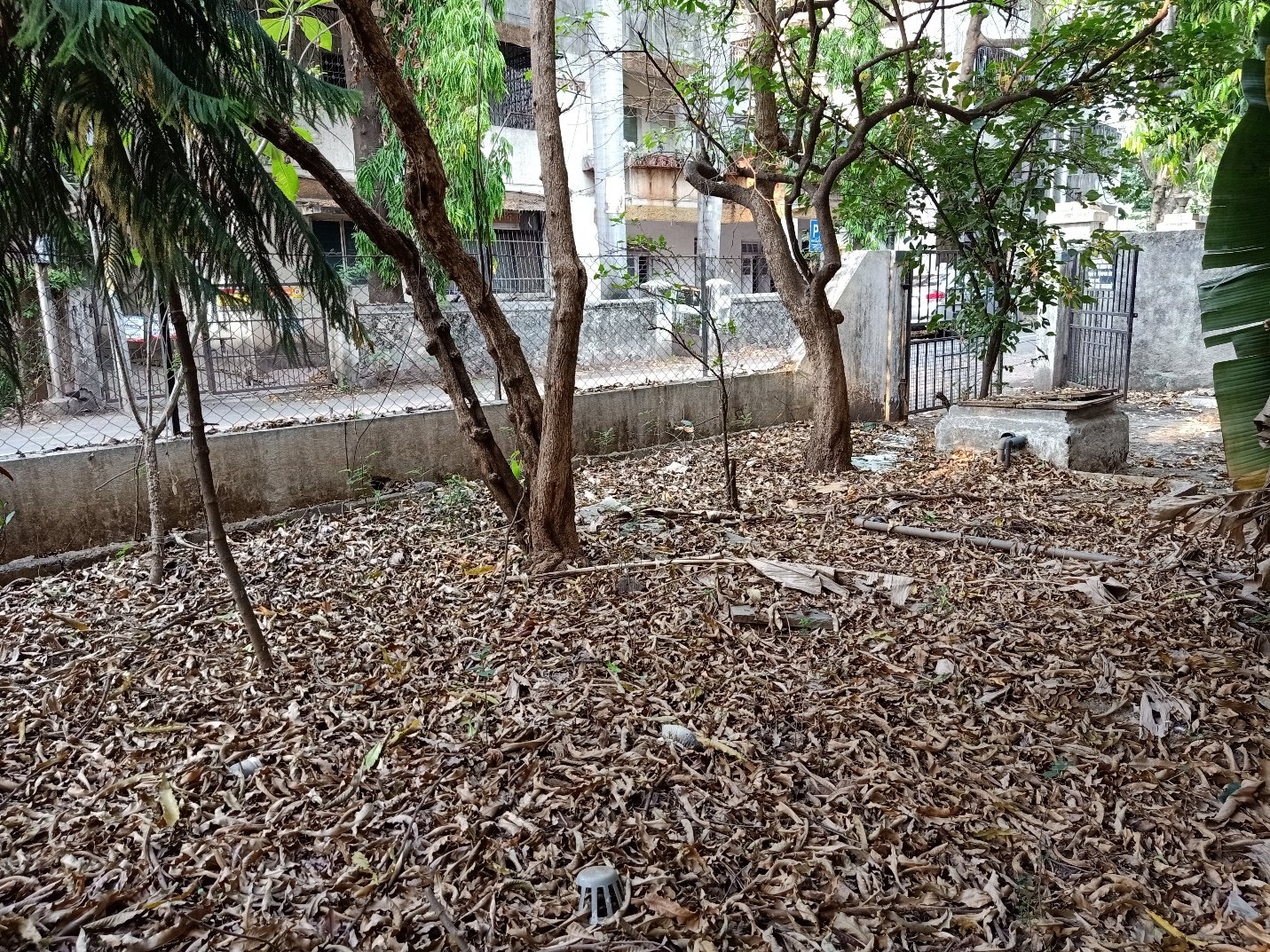
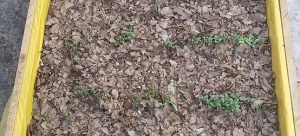
In natural landscape, with monsoon, dry leaves decompose, and nutrients are returned to the soil. In our case, it is not possible to let dry leaves remain where they have fallen and let rains take care of it. Hence, we collect the leaves, and proactively do the process which nature would have done at its pace, that is called composting.
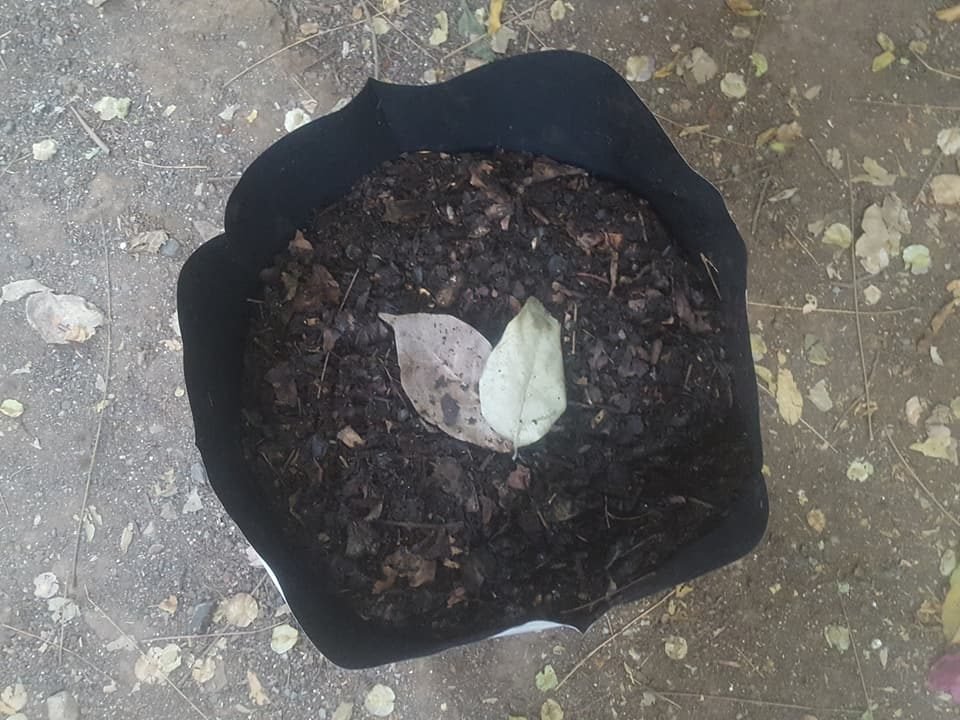
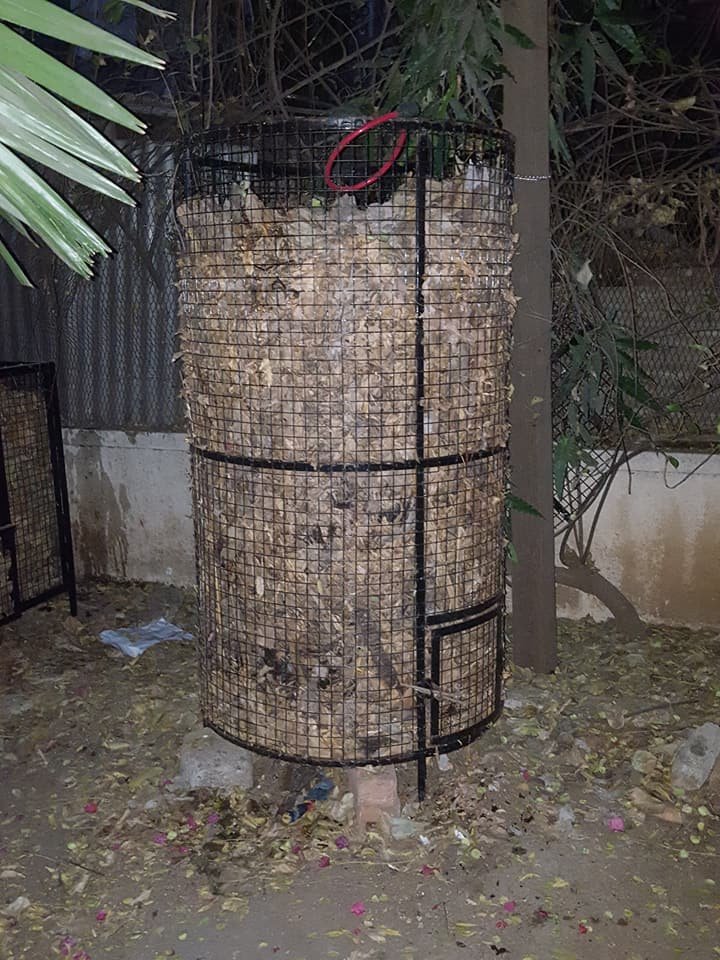
We guide people about how they can utilize dry leaves in their premises with mulching and composting through blogs, guides and sometimes a demonstration in the society by Brown Leaf members.
However, at times, quantity of dry leaves is so much, that even after mulching and composting, there are surplus leaves. Or sometimes it is not possible for somebody to practice these options,
then this is the 3rd option, leaf donation.
What exactly is leaf-donation?
It is exchange of dry leaves from people who have dry leaves to the people who want dry leaves.
Here is the basic concept.
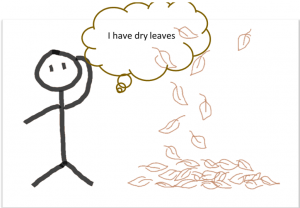
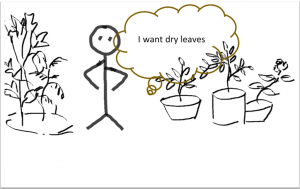
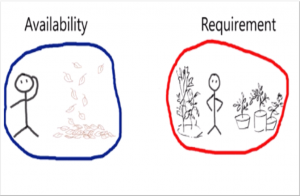
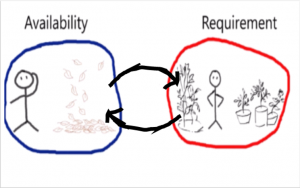
Process is simple. Brown Leaf Donors collect dry leaves in gunny bags and drop a msg on the group, indicating quantity and the area. Brown Leaf Takers for whom the area is convenient, respond and arrange for pickup.

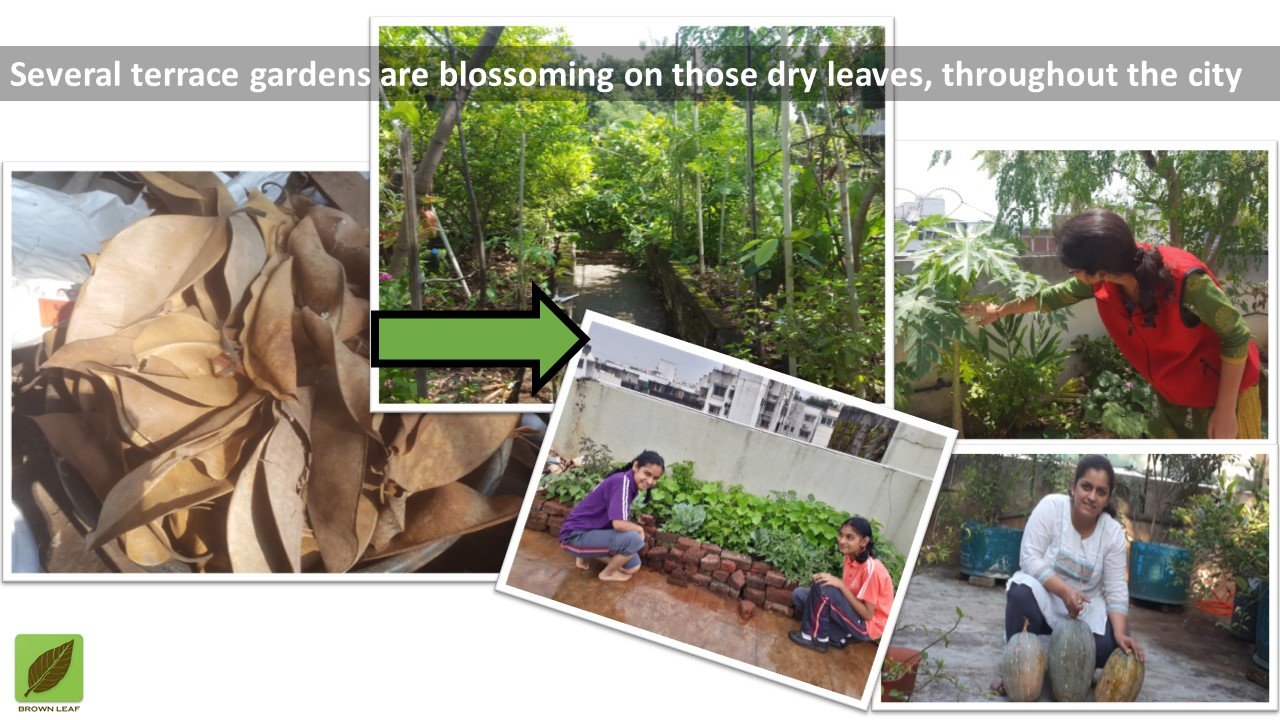
No financial transaction takes place, that is the beauty of the system. Nobody pays any money to each other. It all happens in the spirit of collaboration. Both of them are simply helping each other. Leaf-donor has surplus leaves, which he/she donates to leaf-taker who needs them for mulching and composting.
Individual gardeners usually carry 3-5 gunny bags in the car. Brown Leaf Takers choose the donor near their residence or on route to office. This is how, without consuming any extra petrol, they can get the leaves they want.
Since its inception in February 2016, Brown Leaf forum has enabled exchange of around 50,000 bags of dry leaves. With leaf-donation, it is again a circular system, a bit modified, but still circular.
Some unexpected but very positive side-effects
Leaf-takers started sharing photos of their garden on the group, as a way of saying Thank you to the leaf-donors. These photos helped change perception of leaf-donors because now, they could see garden blooming on the dry leaves. What they had perceived as waste, now seemed like a resource.
Many of the leaf-donors gradually became leaf utilizers.
Now, Brown Leaf is not a mere leaf-exchange forum. Seeds, saplings, ideas and advice is shared on the group. It has become a collaborative community now.

